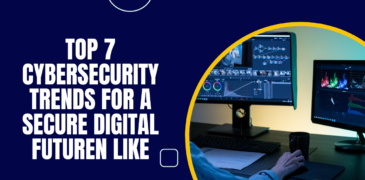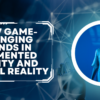The acceleration of technological advancements brings forth not only opportunities but also an escalating array of threats to our interconnected landscape. This compilation delves into the seven foremost cybersecurity trends expected to shape a secure digital future. From the integration of artificial intelligence in cyber defense to the complexities introduced by quantum computing, these trends emphasize the critical need for proactive measures to safeguard sensitive data, essential infrastructure, and individual privacy. Join us as we navigate through the forefront of cybersecurity, where constant innovation and vigilance are pivotal for building a resilient and secure digital future.
AI-Powered Threat Detection and Response
AI-powered threat detection and response is a pivotal trend reshaping the cybersecurity landscape. As cyber threats grow in sophistication, traditional methods often fall short in providing timely and effective countermeasures. In response, organizations are turning to Artificial Intelligence (AI) to fortify their defenses.
AI algorithms, driven by machine learning models, exhibit an unprecedented ability to analyze vast datasets in real-time. This enables the identification of patterns, anomalies, and potential threats that may go unnoticed by conventional security systems. The speed and accuracy of AI in threat detection allow organizations to respond promptly to emerging cyber risks, minimizing the impact of potential breaches.
Zero Trust Architecture
Zero Trust Architecture represents a fundamental departure from traditional security paradigms by challenging the conventional notion of trust within network perimeters. In a digital landscape marked by increasing complexity and diverse threat vectors, the Zero Trust model operates on the premise that trust is never assumed and must be continually verified. This approach mandates stringent identity verification for any entity, whether internal or external, attempting to access network resources. Regardless of the user’s location or network connection, continuous authentication and authorization processes are enforced. This granular verification minimizes the risk associated with potential breaches by restricting lateral movement within the network, even for authenticated users.
Zero Trust Architecture operates on the principle of least privilege, ensuring that users and systems only have access to the specific resources necessary for their roles. This not only enhances security but also mitigates the potential impact of a compromised account.
Cloud Security Posture Management (CSPM)
Cloud Security Posture Management (CSPM) emerges as a crucial cybersecurity trend in response to the widespread adoption of cloud services. As organizations migrate their infrastructure and applications to the cloud, ensuring the secure configuration of these environments becomes paramount. CSPM is a set of tools and practices designed to identify, assess, and remediate misconfigurations and security risks in cloud-based resources.
CSPM tools continuously monitor cloud infrastructure for compliance with security best practices and regulatory requirements. They provide real-time visibility into potential vulnerabilities, such as open ports, unencrypted data, or overly permissive access controls. This proactive approach allows organizations to address security issues promptly, minimizing the window of exposure to potential threats.
Ransomware Resilience
Ransomware resilience has become a focal point in the cybersecurity landscape as organizations grapple with the escalating threat of ransomware attacks. In response to the growing sophistication and frequency of such incidents, there is a heightened emphasis on strategies and technologies that fortify an organization’s ability to withstand, respond to, and recover from ransomware assaults.
One key aspect of ransomware resilience involves the implementation of robust backup and recovery mechanisms. Regularly updated and secure backups serve as a critical line of defense, enabling organizations to restore their systems and data in the event of a ransomware incident without succumbing to extortion demands.
Employee training programs also play a pivotal role in bolstering resilience. Educating personnel about the dangers of phishing, social engineering, and other attack vectors helps create a human firewall, reducing the likelihood of inadvertent actions that could lead to a ransomware infection.
IoT Security Measures
As the Internet of Things (IoT) continues to proliferate, implementing comprehensive IoT security measures. It has become a paramount concern in the cybersecurity landscape. The interconnected nature of IoT devices introduces new attack vectors. This making it imperative for organizations to deploy robust strategies to safeguard against potential threats.
One key facet of IoT security involves the implementation of stronger authentication protocols. Ensuring that only authorized users and devices can access IoT ecosystems mitigates the risk of unauthorized manipulation or data breaches. Additionally, encryption methods play a crucial role in protecting the confidentiality and integrity of data transmitted between IoT devices and the broader network. IoT security measures encompass a combination of access controls, encryption, continuous monitoring, and proactive design considerations. As the IoT ecosystem continues to expand, these measures collectively contribute to building a resilient defense against the evolving threats targeting interconnected devices in our digitally interconnected world.
Quantum-Safe Cryptography
Quantum-Safe Cryptography stands at the forefront of cybersecurity innovation, addressing the imminent threat posed by advancements in quantum computing. As traditional cryptographic methods face the risk of being compromised by the sheer computational power of quantum computers. There is a pressing need to develop encryption algorithms resistant to quantum attacks.
Quantum-Safe Cryptography, also known as post-quantum cryptography. It involves the exploration and implementation of cryptographic algorithms. That remain secure even in the era of quantum computing. These algorithms leverage mathematical problems that are currently believed to be hard for both classical and quantum computers to solve.
The transition to quantum-safe cryptographic standards is a proactive measure, ensuring that sensitive data encrypted today remains secure in the future quantum landscape. Cryptographic researchers are actively working to standardize quantum-resistant algorithms, and organizations are beginning to integrate these solutions into their security frameworks to future-proof their data against potential quantum threats.
Biometric Authentication Enhancements
Biometric authentication enhancements mark a pivotal trend in bolstering digital security by leveraging unique physiological or behavioral characteristics for identity verification. As organizations seek more robust and user-friendly authentication methods, advancements in biometrics play a crucial role in strengthening access controls.
Fingerprints, facial recognition, iris scans, and voice recognition are among the key biometric modalities experiencing continuous refinement. These enhancements not only improve accuracy but also contribute to a more seamless and user-friendly authentication experience. Multi-factor authentication, combining biometrics with traditional methods, adds an extra layer of security, reducing the risk of unauthorized access.
Continuous research and development in biometrics focus on addressing challenges such as spoofing and ensuring inclusivity across diverse demographics. Advancements in liveness detection, which assess the authenticity of biometric inputs. Further enhance security by thwarting attempts to deceive the system with fake or replicated biometric data.
Conclusion
In conclusion, the dynamic landscape of cybersecurity demands continuous adaptation to emerging threats and technological advancements. The seven highlighted trends – from AI-powered threat detection to Quantum-Safe Cryptography. And it enhanced biometric authentication – collectively underscore the imperative for proactive, multi-faceted security measures. This embracing these trends is paramount for building a resilient defense against cyber threats. The synergy of advanced technologies and strategic approaches ensures a secure digital future. There organizations and individuals can navigate the complexities of the interconnected world with confidence.
Read more:







